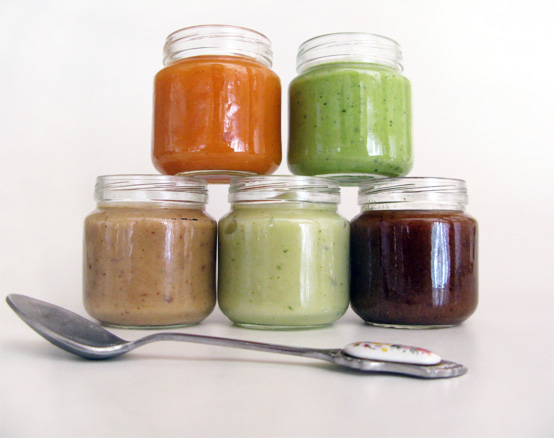6 Things You Might Not Know About Jarred Baby Food
/One of the most common questions I get asked about baby food is this: “Why should I make my own? Isn’t jarred food the same thing?” The truth is that while the ingredients might read the same as what you’d use to make at home (like carrots and water, for example), there are many major differences that aren’t always so noticeable. These five truths about jarred baby food are truly shocking.
- The baby food you’ve purchased may have been sitting on the shelf since before you were even pregnant. The expiration date of jarred baby food is often years away, and to enable that shelf life, jarred baby food is cooked at extremely high temperatures—a process that removes many of the nutrients.
- Jarred baby food doesn’t actually taste like what it claims to be. Do this test at home: Remove the label from the jar, and do a taste test to guess what vegetable or fruit you’re eating. Tough, right? That’s because the high temperature processing affects the flavor and texture of the food, making it difficult to differentiate the food by taste alone. As a parent whose goal is to get my kids to eat a diet full of fruits and veggies, giving them a taste of what fruits and veggies really taste like is crucial to start them off on the right track.
- Additives are often present. You’ll often see ascorbic or citric acid on the ingredient list of organic and conventional baby foods. When the jars are heated to high temperatures to preserve shelf life, it results in a loss of vitamins and nutrients in the food. To combat this, baby food companies add in artificial forms of vitamin C that come in the names of ascorbic or citric acid so the jars aren’t totally devoid of the nutrients they’re supposed to naturally contain.
- BPA is used in many brands to coat the lids of jarred baby food. Metal lids can contain Bisphenol A, which is especially dangerous to infants whose immune systems are weaker and less able to rid the body of toxins. A study published in Environmental Health Perspectives found that widespread exposure to BPA may result in levels of up to 11 times higher in infants than in adults.
- They’re sneaky about sugar. Just because an ingredient label doesn’t read “sugar” doesn’t mean it’s not there. Look for sneaky sources of sugar including any sort of “juice concentrate” which are often added to sweeten up mixed fruit and veggie pouches and jars—even ones labeled as “natural”. Other sneaky sugar sources to seek out: fructose, malt extract, any type of syrup, or any ingredient ending in “ose” like fructose.
- They're swimming in pesticides. A recent study of jarred baby food found that one measly jar of peaches contained 22 varieties of pesticides! Apples, pears, and green beans also contained more pesticides per jar than would legally be allowed on the shelves of European grocery stores. (American companies aren’t required to follow strict regulations.)
The bottom line is that when you buy food from a store shelf, it’s impossible to know everything that goes into it, and making your own baby food (and using organic fruits and veggies when available), is THE BEST WAY TO know exactly what’s going into your baby’s belly.



